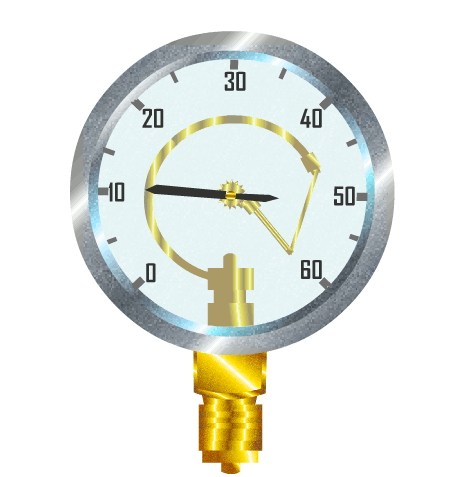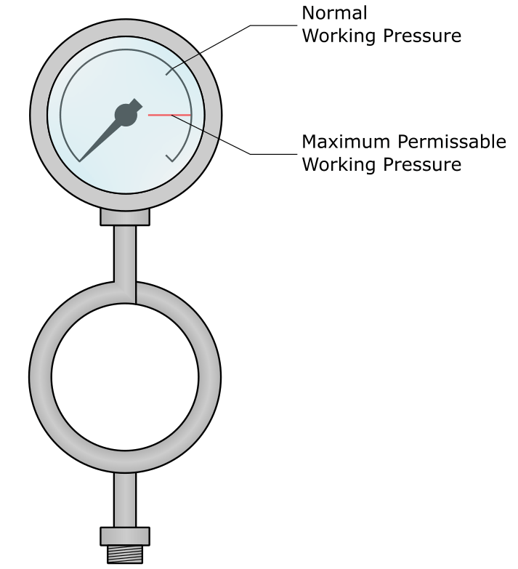Introduction
All boilers are required to be fitted with a local pressure gauge that is easy to access and read. Additional remote gauges or read-outs are also recommended -and sometimes required- to monitor the pressure within the boiler. A boiler local pressure steam gauge should be:
- Connected to the steam space.
- Have a face with a sufficient size e.g. 6 inches.
- Be installed on the vertical plane.
Local boiler pressure gauges are often calibrated to operate at no more than 2/3 of their scale. Using the pressure gauge shown below, a boiler’s maximum allowable working pressure (MAWP) would thus be shown at approximately the ‘40’ region; this ensures the boiler’s effective pressure range will not strain the gauge. Strain on the gauge can cause the bourdon tube to stretch and lead to false readings.

Typical Bourdon Tube Operation
With reference to steam boilers, a bourdon gauge should be mounted on a siphon, allowing condensate to form in the bottom of the loop and shield the gauge’s internal components from the heat of the steam. The siphon does not affect the pressure between the loop and the gauge, which is always maintained at boiler pressure.

Boiler Pressure Gauge Siphon
Pressure Gauge Testing and Calibration
Considered a critical safety device, it is vital that pressure gauges undergo routine inspection and calibration, ideally conducted in conjunction with statutory inspections. Irrespective of the frequency of statutory inspections, or whether calibration is included among them, pressure gauges should be removed and calibrated annually. Documentation of this calibration should be maintained, and stickers detailing the most recent calibration should be applied to the back or outer ring of the gauge, not on the face.
When pressure gauges are maintained, isolating valves or cocks within the boiler are required to be fully open. If isolations are partially shut, even a minor steam leak (which should be repaired as quickly as possible) can prevent the gauge from recognising full boiler pressure, and inaccurate readings will be provided as a result.
Related Online Engineering Courses
Introduction to Steam, Boilers and Thermodynamics
Sub-Critical, Supercritical, and Ultra-Supercritical Boilers
How Coal Fired Power Stations Work Part
Additional Resources
https://instrumentationtools.com/pressure-gauge-syphons-principle
https://appmeas.co.uk/resources/pressure-measurement-notes/what-is-a-pressure-gauge-siphon
https://blog.wika.us/knowhow/how-to-select-pressure-gauge/
